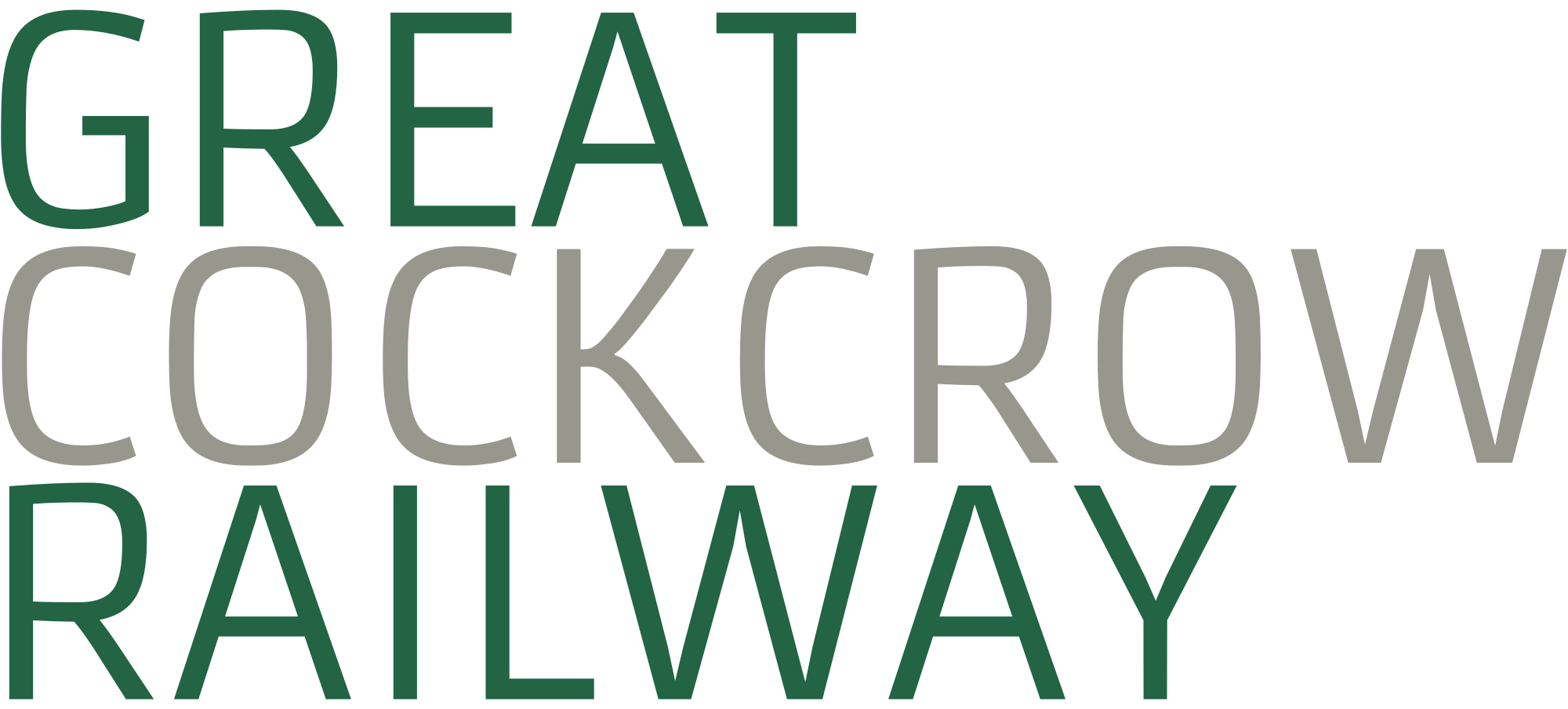OurSignalling
The line is fully signalled with three signal boxes and one gate box based on mid-1950s British signalling practice. With the exception of the signals, which are scale models, and other outdoor equipment, the signalling system is constructed from full size equipment recovered from the national rail network when it became redundant.
The three signal boxes are at Hardwick controlling the main terminus, at Cockcrow Hill where some trains terminate and at Everglades Junction which all trains pass at least twice. The gate box at Lesters Crossing controls access to and from the lower field.
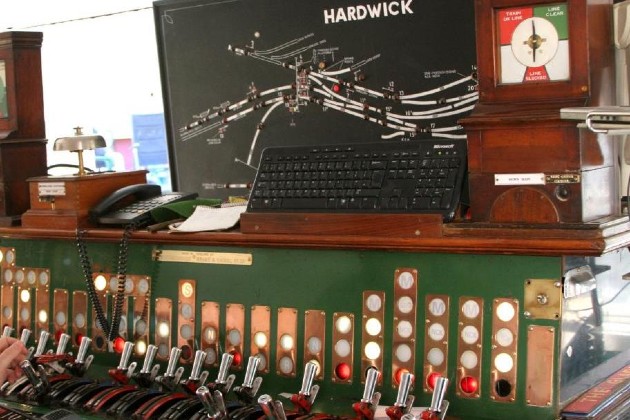
Hardwick Signal Box
Hardwick is a 23-lever frame that was part of the original Crewe South Junction (which had 227 levers and was in use from 1939 until 1986) and was installed and commissioned in 1988 and updated in 1993. The Signal Box is equipped, as far as possible, how an old LMS Signal Box would have looked in around the 1950s. With an illuminated diagram made of wood, with a hand painted track layout and red lamps at the extremities of each track circuit. In following basic LMS practice, the point operating levers have notched quadrants at the 'B' and 'D' positions for point indication locking and the signals have quadrant notches at the 'B' position for back locking. Of course, being an all-electric locking frame 'A' and 'E' locks and quadrants are provided on all levers.
Following LMS tradition, one lever is provided for a signal no matter how many routes are available from that signal. To aid the signalman, an indication is provided above the lever that shows the route (or destination) for which the points are presently set for that signal. The pull plates are in front of the lever on a shelf that is standard for all 'L' frames. The signal indications simply show red when the signal is at danger and white when the signal is ‘off’. Although the Railway is completely track circuited, Absolute Block working is in force to the next Signal Box using Midland Railway type instruments (circa 1914) with full track circuit controls.
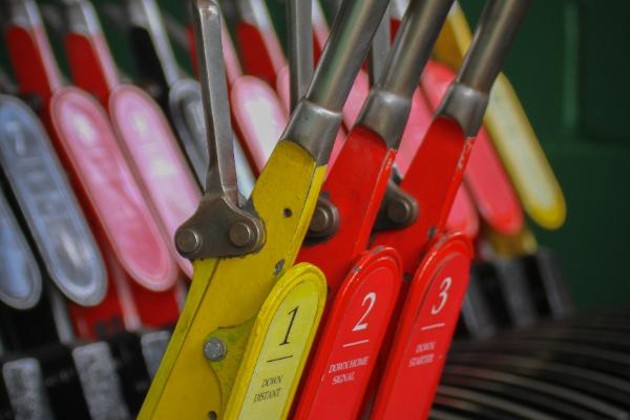
Cockcrow Hill Signal Box
Cockcrow Hill Signal Box is equipped with a 16 lever Stevens ‘Knee Frame’ with both mechanical and electrical locking and was commissioned in May 2001, replacing an LMS 1943 tappet frame after the layout at Cockcrow Hill Station was completely re-modelled. 12 levers are fitted with combined lever locks and circuit controllers and the other four levers have circuit controllers only.
The Railway Signal Co manufactured this frame and it was originally installed at Waterloo Station on the ‘Waterloo and City’ line and is thought to be over 100 years old.
The Signal Box is the one which closest resembles those you may have seen on old films, with levers ablove waist and with shiny metal tops. It controls the whole of Cockcrow Hill terminus and the line around Green Lane.
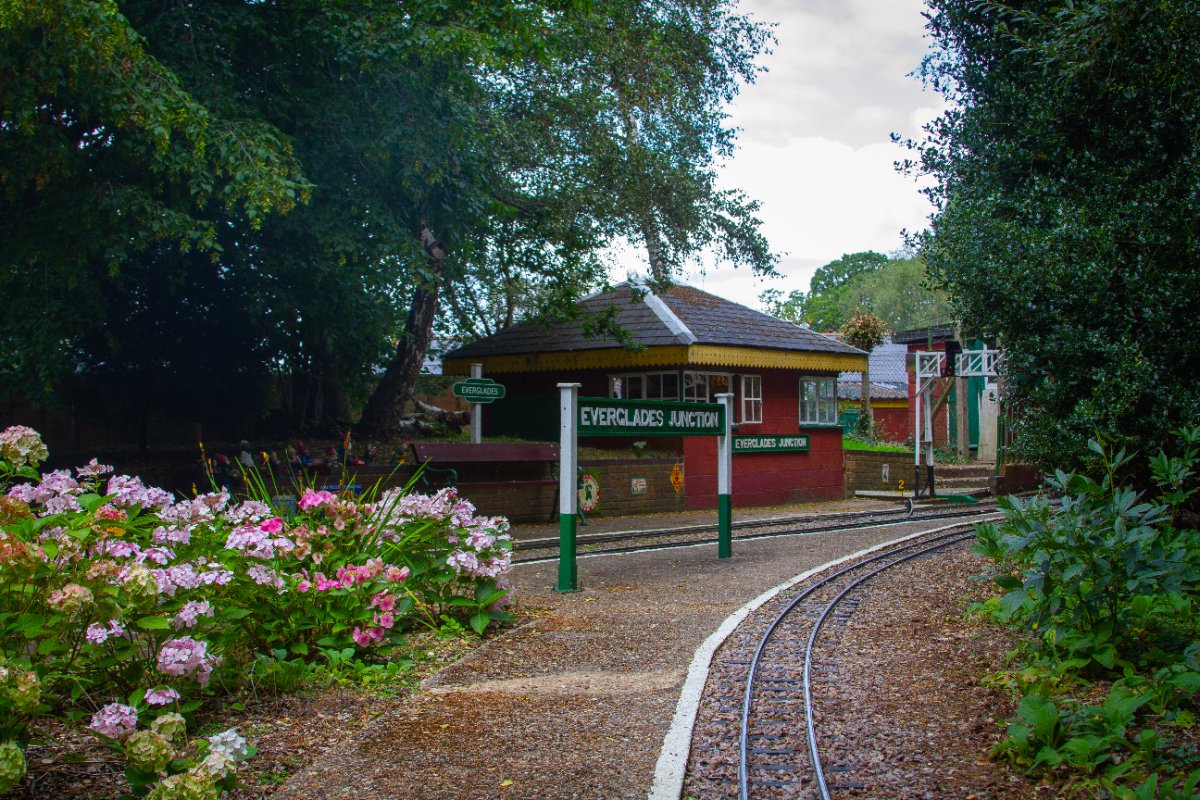
Everglades Junction Signal Box
Everglades Junction is set out as a BR Southern Region Signal Box as it would have been around the 1950s. The Westinghouse 'L' frame is of 31 levers and came from South Croydon when the Three Bridges re-signalling scheme was introduced in April 1984. As the frame was installed in 1953 it had quite a short life on BR - even so it is now 70+ years old. The frame came complete and is installed as per the original BR-SR standards in 1980 and was expanded and re-wired in 1991. It controls 3-aspect and 4-aspect signalling. Following BR-SR practice, the aspects on the signals are repeated on the frame, including junction indicators and there is one signal lever controlling all possible routes from that signal. There are no indication quadrants; the lever position and detection being in the circuit for the release of the signal lever. 'Free' indications are also shown above the signal levers.
A Southern Region miniature illuminated diagram is provided. Block Working to adjacent Signal Boxes is via Southern Railway Standard instruments (circa 1920s) with full track circuit controls. In true SR practice, the ‘tappers’ for the Block Bells are not part of the bells but use separately mounted brass plungers.
There is also a Train Describer using a VDU display with automatic code 'set up' and automatic 'code change'. This helps the signallers keep track of the trains, and to also keep a count of the number of trains that run over the system in any one day.
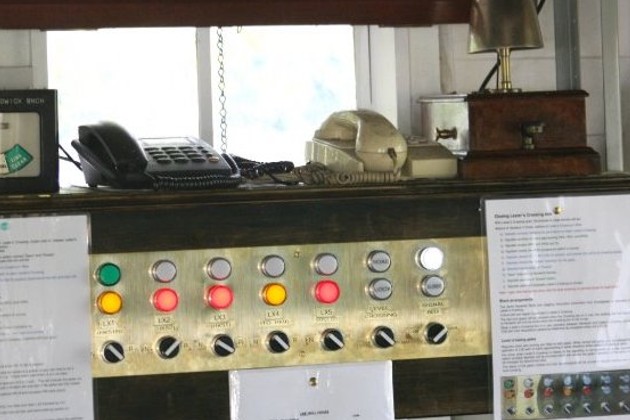
Lesters Crossing Gate Box
Our smallest box on the railway, Lesters crossing allows us to control the level crossing on the Down North Hardwick Line, which circumnavigates the bottom car park/field. You can see the box being operated on a busy Sunday or when a party is taking place in the field.
The box is currently operated by a switch panel that allows the signaller to control the signals on the branch line and the actuator-operated crossing gates. Alongside the switch panel, we have added a lever frame (co-acting) to control the signals and points in the area.
Other Information
Control Equipment
All the controls for the railway and the monitoring of the position of trains, uses BR930 Specification miniature plug-in relays recovered from the national rail network. These generally work at 50V dc and are of about 30 different types. They form the interlocking, which reduces the chances of things going wrong. The circuits are all designed in-house to BR and Network Rail principles.
Track Circuits
Each of the 70+ track circuits on the railway is fed at 12v DC from a transformer/rectifier with an adjustable 20-ohm resistor. It uses a 12v DC BR 930 Spec. relay with a minimum pick-up of 6.3 - 7.1v. The rail is bonded at the joints and we make our own insulated joints.
Point Machines
Point machines were originally made from 12v Ford Escort wiper motors with microswitches for detection. Spring-operated facing points are also detected. The insulated front stretcher is made from polycarbonate strip and the point machines have an integral FPL.
Owing to the dwindling availability of the wiper motors, experiments are currently under way with a new type of point machine (using a commercially available 12v linear actuator) that is also detected by means of microswitches. All point machines at Cockcrow Hill are currently of this type.
